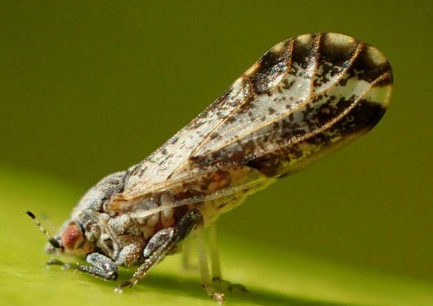The introduction and spread of plant pests, such as fungi, bacteria, viruses and insects, among food crops, natural vegetation and landscape plants is a serious threat that can have far-reaching economic, social and environmental consequences. Plant pests are often introduced to areas previously unaffected through plant imports. In European Union (EU), protective measures against the introduction of new plant pests are based on regulatory controls on the movement of plants and plant products as established by EU Plant Health Law (Regulation EU 2016/2031). The evaluation of the of plant pests being introduced and then spreading in an area and the assessment of the potential consequences help inform the decision making on protective measures.
The Panel on Plant Health of the European Food Safety Authority (EFSA) provides independent scientific advice on the risk posed by plant pests which can cause harm to plants, plant products or biodiversity in the EU. The Panel reviews and assesses those risks with regard to the safety and security of the food chain. One of the key tasks of the EFSA Plant Health Panel is to conduct risk assessments using a wide-range of specialist expertise and the most current scientific knowledge available in order to provide scientific advice to the European Commission. EU-funded research projects like PreHLB play a pivotal role in providing reliable up to date scientific information for those risk assessments.
Recently, the EFSA Panel on Plant Health performed a pest categorisation of Diaphorina citri (Hemiptera: Liviidae) (Asian citrus psyllid) for the EU. Two researchers of the PreHLB project participated in this assessment, assuring the transfer and availability of the outcomes of the project as well as fostering interactions with risk assessors.
Diaphorina citri is a vector of the Huanglongbing (HLB) also known as citrus greening. Commission Implementing Regulation (EU) 2019/2072 (Annex IIA) regulates D. citri, as a quarantine pest not known to occur in the EU territory. The pest categorization by EFSA indicated that fruits and plants for planting are the main potential pathways for entry of D. citri into the EU. These pathways are being quantitatively analyzed in the frame of the PreHLB project, with the aim of establishing the most favourable areas and trade pathways for the entry of HLB and psyllids vectors in the EU. Hence, the official surveillance systems could be reinforced in these places. In relation to this, EFSA has also published upon request by the European Commission a pest survey card for HLB and its vectors. The aim of this survey card is to assist the Member States in planning annual survey activities for these quarantine organisms of citrus. This pest survey card includes the data on pest distribution, host range, biology, risk factors and detection methods. PreHLB is strongly working in all these aspects and so the survey card can be periodically updated with the most recent scientific information.
The pest categorization of EFSA highlights the great multiplication potential of D. citri, completing 9–10 generations/year and up to 16 generations under protected conditions. This scientific opinion considers that the climate and availability of host plants in EU citrus-growing areas provide conditions to support establishment of D. citri. Building on this qualitative assessment, researchers of PreHLB are assessing with a quantitative approach the potential geographical distribution and spread of HLB vectors over the EU using climate mechanistic models. Also, creating risk maps for HLB vectors introduction in the EU by simulating HLB invasions in the EU and its impact on citrus production considering also climate change.
More importantly, the pest categorization by EFSA concludes that the introduction of D. citri would have an economic impact in the EU through direct but mainly indirect effects due to potential transmission of HLB. The socio‐economic impact of HLB in the EU will be also analyzed and quantified in the frame of the PreHLB project. The disease social impact will be assessed using surveys among stakeholders in different citrus‐growing regions. The current knowledge about the disease and awareness levels will be assessed among actors along the implementation of the project. Also, social acceptability of HLB management practices will be evaluated, as this is probably the most crucial aspect for the success of the response programs after an incursion of the disease.
Finally, the PreHLB project is working in preemptive program for the design of Citrus Health Management Areas (CHMAs) in the main citrus-growing areas in the EU. The CHMA is a tool to help the citrus growers in the regional or area wide control of HLB vectors. The system will collate the periodic information about regional psyllid population and the presence of new shoots on citrus trees. This service will allow citrus growers to identify places of psyllid occurrence and critical moments. Other preemptive control measures being developed in the PreHLB project include cultural practices, bioinsecticides, antimicrobial peptides and genetic resistance.
More information:

